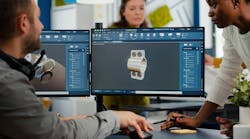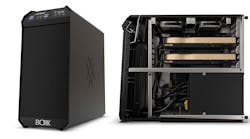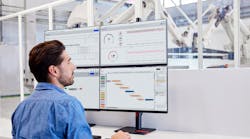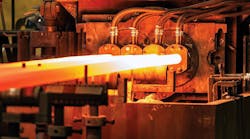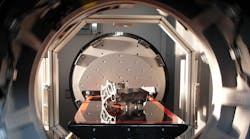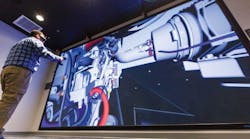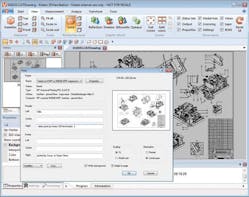Reports and reviews of high-technology product design diverge into two categories: cool personal gadgets and powerful ‘big data’ processing capabilities. The first covers the devices you buy for your pocket or briefcase; the second covers the tools you select, license, or subscribe to for your business or manufacturing program. The two categories don’t intersect much.
But in the world of software, especially in design software, there is some movement. Design is almost always a collaborative process, meaning collaboration among individuals as well as across devices and platforms. That matters significantly to organizations’ structures and strategies. For example, announcing the release of a CAM update, the developers of Edgecam suggested their new functionalities indicate that “automatic conversion of 2D design data to a 3D model” will be the “default” for using the program. Think about it: the design program becomes the machine data engine. That establishes a new level of importance for sharing design data.
That’s not all. Kisters, a developer that specializes in visualization systems for CAD-data and documents, including ECM and PLM integrations, released a new version of its 3DViewStation, a high-powered program capable of 3D viewing and digital mock-up (DMU), compatible with current and legacy CAD importers, that incorporates a set of functional tools for viewing, analyzing, and communicating 3D data.
The new program supports 2D drawing capability and large-format printing too, among other functions that accelerate the process of sharing data in collaborative design. Those huge volumes of data are passing from one designer or technician to the next, with speed and functionality.
But, the flashier, personal variation of ‘high tech’ is taking a role in the convergence, too: collaborative design and planning on the big screen. AGCO, the agricultural equipment OEM, installed a widescreen virtual reality system at an R&D center in Germany that so impressed the users with its results and utility that a similar installation is in place now at an AGCO design center in Jackson, MN. Christie Digital Systems’ “powerwall” uses two D4K3560 3-Chip DLP® 4K projectors running at 60Hz, with TechViz’s 3D visualization software technology and an ART tracking system to display images of agricultural machine models in stereoscopic 3D on an 8×16-ft glass screen. Christie single-handed the project, performing the site survey and full design, integration, and installation.
AGCO committed to state-of-the-art visualization for its design development program to enhance the designs and to empower the developers. The system’s stated function is to optimize product quality and reduce costs by streamlining the process, but AGCO also plans to use the powerwall for manufacturing and assembly training, as well as servicing and marketing.
“The powerwall has become an incredibly instrumental and useful part of our engineering process,” according to Joseph Black, AGCO senior business analyst. “By reviewing the models virtually we are able to catch interferences, perform clearance checks, and fix engineering designs ahead of prototyping, allowing us to create fewer prototypes before the final product is ready. Ultimately, we hope the powerwall will not only help us reduce costs, but build the best farming equipment possible.”
Don’t overlook the powerwall’s influence on the designers: it presents technicians and engineers with a more immersive experience, engaging them with the color and scale that entertainment and gaming systems now offer as standards. More than that, it enhances the creative process, allowing them to share details and adopt variations that may be missed in a singular or iterative approach.
It’s not hard to forecast ‘powerwall’ variations for controls systems, on site or remotely. Live video streaming seems an obvious function to consider, offering new advantages for plant safety and hygiene. The progress toward future manufacturing concepts moves in multiple dimensions, from small-scale production (think of desktop 3D printing) to large-scale design, and into the human dimension of creativity, responsiveness, and interaction.


